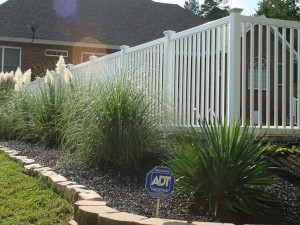If you are looking to fence your yard, you may want to consider installing either a wood fence or a vinyl fence. Wood is better for large yards, while vinyl is better for small spaces. There are many advantages and disadvantages to both materials, and it all depends on how much space you want to fence. To decide which type of fence to install, keep in mind the costs, maintenance, and variety of options available.
Cost of wood vs vinyl fence
Wood fences are much cheaper than vinyl fences. However, the initial cost of wood fencing varies depending on the style and material. Pressure-treated pine is the most common type of wood used for fences. However, it is not as durable as other types of wood, such as cedar, tropical hardwoods, or black locust. Depending on your preferences and needs, wood fences can cost anywhere from $3 to $6 per linear foot.
Wood fences require a lot of prep work such as post holes. Wood fences also require a great deal of attention to detail. On the other hand, vinyl fences come in pre-assembled panels, so you won’t have to worry about fitting pieces together. Additionally, wood fences are more susceptible to rot and other environmental factors, so you will need to paint them or seal them with a protective sealant. Vinyl fences, on the other hand, require little maintenance other than a simple wash to keep them clean.
While both vinyl and wood fences are great choices, they are very different in terms of price. While wood fencing is more expensive, it is easier to maintain than vinyl. Its low maintenance cost offsets its higher initial cost.
Durability
While wood is the classic material for fencing, vinyl is also a popular option for a variety of reasons. Vinyl is a material that requires little maintenance and is resistant to mold and rot. These properties make vinyl a good choice for people who want a fence that will last for many years. However, if you want a more affordable option, you should consider wood.
Wood fencing is traditionally beautiful and offers a classic, all-American look. However, the downside is that wood fences tend to degrade more quickly than vinyl. While real wood fences may initially arrive in mint condition, they will eventually begin to warp and decay and become a haven for pests. In addition to this, wood fences must be stained annually for the first three years and repainted every two years after that. Additionally, wood rots over time, so it is best to replace your wood fence when the lumber starts to show signs of damage.
If you are looking for a fence that will stand up to harsh weather conditions, you should consider vinyl. Vinyl doesn’t rot and doesn’t need to be stained regularly. A vinyl fence will last for up to 100 years, but be sure to protect it from trucks and heavy equipment. Most residential fencing services offer lifetime warranties on vinyl fences.
Maintenance
When you’re deciding on a new fence for your home, there are a few factors to consider. Vinyl fencing is relatively maintenance-free, while wood requires periodic painting or staining. Wood fences also need more repairs, especially when exposed to rain or other moist weather.
While wood naturally breaks down over time, it’s still a popular choice for many homeowners. Certain types are resistant to rot, decay, and termites, though they still require regular maintenance. Adding a protective sealant to the wood is a good idea to protect it from these damaging conditions. Meanwhile, vinyl is synthetic and can withstand harsh weather.
If your wood fence is in need of repairs, it’s possible to replace individual boards without replacing the entire fence. Wood fences are also relatively easy to repair. You don’t need to replace the entire panel if one is damaged, since you can paint it again to match your existing fence. However, if you’re unable to fix a small hole or crack, you’ll have to call a professional.
Variety
There are many benefits of choosing wood as your fence material. It is naturally beautiful with natural variations and an organic texture. Wood can also be stained or painted. Vinyl, on the other hand, can come in many colors, textures and designs. It also provides a uniform appearance. Each material has its own unique advantages and disadvantages.
Wood fences require more upkeep than vinyl. Pressure washing and staining is necessary to keep the wood looking its best. Painting a wood fence will extend its lifespan, but paint will chip or peel. Vinyl, on the other hand, does not fade, warp or splinter. Vinyl is easier to clean and maintain and will look great for many years.
Vinyl fences can be repaired much easier than wood fences. They do not have to be replaced entirely if there is damage, and the vinyl slats can be bought at the store and installed by the homeowner. Wood fences, on the other hand, may require professional help to fix.
Did you miss our previous article…
https://yardworship.com/fence-permit-what-you-need-to-know/

